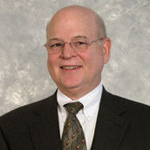Should the title of this blog strike fear in the hearts of emergency physician specialists? There is an erroneous urban legend which says the Chinese character for “crisis” is composed of elements that mean danger and opportunity. While the legend may be incorrect, the notion sometimes has truth behind it. Is that the case with PAs and NPs working in EDs?
The fact is that producing emergency medicine residents at the current rate, we will not be able to fill the number of open emergency department positions in the United States -- ever. That certainly seems like job security for those of us who are Board certified. I am certainly glad I have kept my Boards current, but how will that solve the man/womanpower shortage in EDs that we face now and in the future?
There are already many non-emergency Boarded physicians working in EDs to help fill the gap. Most of them are primary care generalists who were attracted to the clinical practices, lifestyle and compensations of the ED. Yet that may be only a limited solution. There is a big push to increase the number of primary care physicians in the country. This will occur with or without Obama care. Why? Because it is obvious to lots of people who make healthcare decisions that primary care promises a more organized, comprehensive and consequently less expensive type of medical care than having patients seen in the ED. This is increasing the demand for primary care physicians. The law of supply and demand will take care of the rest. So, EDs will be competing for yet another scare resource: primary care physicians.
It is quite unlikely that we will see an increase in the number of ED residencies or residents. Residencies are supported by the government which has already decided that primary care is the holy grail of medicine in the US -- not emergency medicine. If more residencies are developed, they will be for primary care physicians.
So the next solution is to hire advanced practitioners. Physician Assistant training takes two years, most often followed by on-the-job training in the ED. Some PAs also choose to complete an emergency medicine fellowship for another year of training, and my hope is that these programs will become more widely available. This process is much less time intensive and expensive than the four years of medical school and three years of post-graduate emergency training for physicians. There are currently many nurse practitioners who work in EDs and have similar reduced training costs (again, both time and money). There will be more.
I have worked side-by-side in the ED with PAs and NPs for more than 20 years and find them to be valuable colleagues. My emergency medicine practice has been enhanced by working with PAs and NPs
So I don’t believe PAs or NPs will replace trained and experienced emergency physicians. Instead I believe they will be a vital part of the ED team. Yes. Team. We will all be part of a team rather than lone wolves working by ourselves to solve and treat diagnostic dilemmas coming to the ED. However, the experience and training that Boarded emergency physicians have will be needed to manage the sophisticated EDs of the future and to help guide the ED team in the care of the flood of new patients who will need emergency care.
I just don’t believe that there will be fewer emergency patients no matter how hard people try to reduce the numbers. As the population of the United States grows and matures, there will be a steady supply. We will just have to figure out how to provide higher quality with lower costs. Maybe the Chinese character for crisis is also challenge?






















